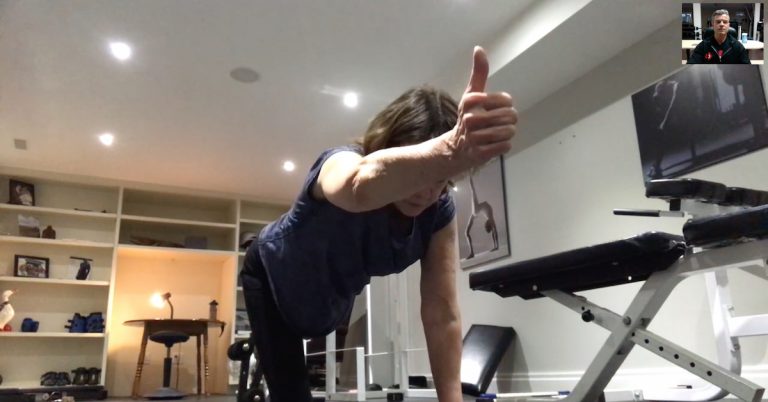I was asked recently about my thoughts of the Functional Movement Screen (FMS). Although I do believe the FMS has some value, I don’t believe that the FMS is the be-all and end-all of screening movement patterns. Every individual and every circumstance is different and a functional assessment should be appropriate for the situation, if performed at all. Many times assessments can be conducted through the actual training process itself and not necessarily as a separate entity.
You have to ask yourself how reliable the FMS really is? Some people with a lot of pain do well on it and some of the best athletes do horrible, so what does it mean? Specificity refers to training for a specific task. You get someone to squat, see what needs to be fixed, and then correct it. Don’t just find out if a joint is tight or a muscle is weak. Find out “why” it’s that way. The reality with many of these tests is that trainers will do a screen and then do the exact same exercises with their clients anyway, so what good is the test to begin with? Strength and conditioning coach Nick Tumminello talked about these issues during an interview on The FitCast Podcast.
In fact, two years after that interview the crew at The FitCast (Kevin Larrabee, Dr. Jonathan Fass, and Leigh Peele) went into an extensive discussion on some of the problems associated with the FMS and what research had to say about it. For example, there seems to be a poor relationship between the FMS and predictors of athletic performance as well as risk of injury.
In the article Red Flags & Dysfunctions, veteran conditioning coach Vern Gambetta brings up some interesting points regarding movement screens in general. Like Gambetta, I’m a fan of assessing through training. For a great way to determine structural balance with your athletes through training, check out this routine.
The bottom line is that every client is different. They have different needs, different goals, different structures, and different circumstances. Therefore, the assessment needs to differ as well. Don’t get caught up in one guru, or in one system of training, or in one form of assessing. You must be malleable and able to adapt to the situation. That comes with experience.
Try this: prescribe a “functional” movement such as a step-up or split squat. Now use your coaching skills to observe, accommodate and correct appropriately. Simple verbal cues may be enough for proper tracking of the knee or to emphasize a more upright posture. If form tends to break on a step-up, lower the step height, have the client stand beside the step rather than in front of it which in essence decreases the range of motion (ROM), and if necessary provide some limited support. If they’re unable to perform full ROM split squats, then start with a partial ROM and increase the range gradually over time, or elevate the front foot onto a step and decrease the step height over time. If balance is an issue with this exercise, again you can provide some limited support which you’ll wean them off of over time.
You see where I’m going with this? You don’t need to assign a score to your personal training clients comparing them to some set of norms. It’s not necessary and may be counterproductive. Just find the right starting point and get them to progress from there.

Guiding Personal Trainers to Success: A Comprehensive Resource
In the aftermath of the pandemic, many personal trainers find themselves struggling to rebuild the business they lost. The key

Mastering the Craft: 10 Essential Rules Every Personal Trainer Must Follow for Success
Today we’re going to look at ten essential rules that can take your personal training game to the next level.

Thumbs Up for Virtual Training
The pandemic decimated many businesses in the fitness industry. Unless you were selling fitness equipment, you felt the impact! But
follow
Error: No feed with the ID 2 found.
Please go to the Instagram Feed settings page to create a feed.
